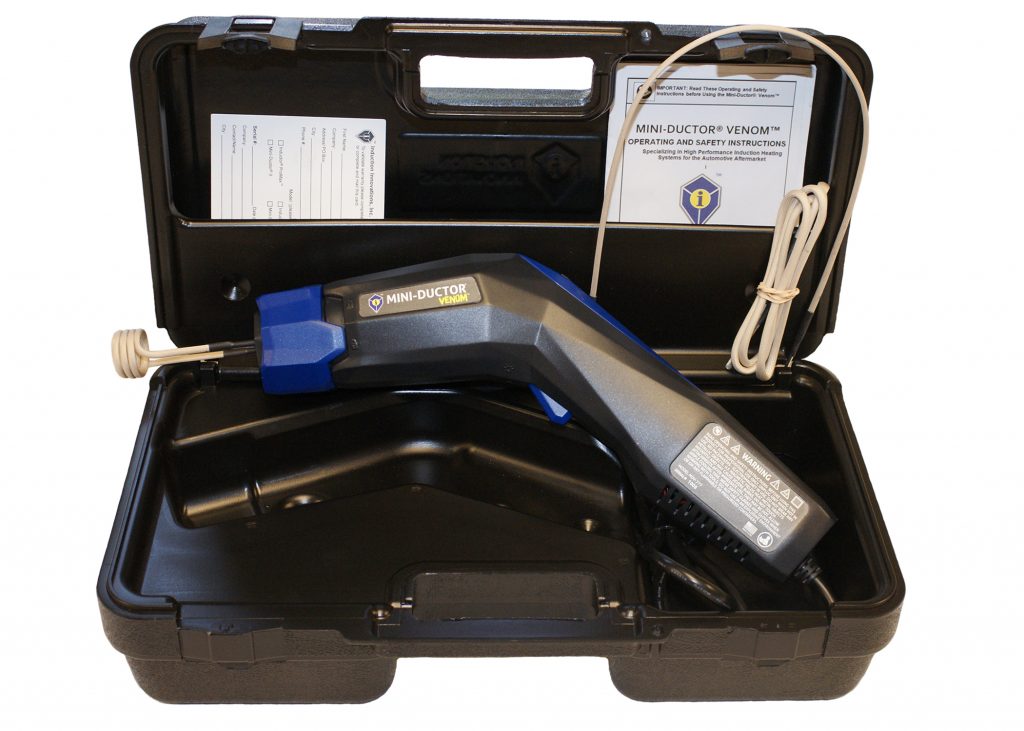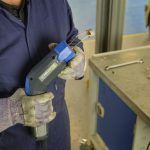PMM product tester, Des Davies, gets his hands on the Mini-Ductor Venom and puts it to use on a variety of workshop tasks. Here’s how he got on.
In reviewing the Mini-Ductor Venom, I carried out a number of tests on various vehicles and components to see how well it performed. My first observation was that I found this tool to be very ergonomic and easy to use – it is well balanced and not too heavy to handle. An advantage I found when using this tool is that it only heats what the coils are wrapped around and you only get localised heat, so there is less chance of heat damage to other components in that area. The Venom is also a lot safer when working near flammable areas.
The product has the noise of the fan when in operation, which gives a good indication that it is actually working when in use. It also has an LED to warn you when it is switched on and to alert you if there is a fault, while a safety cut out switch is incorporated in the tool for additional safety.
In general, the Venom is quite easy and simple to use, boasting a quick twisting action to lock the coils in place. The instructions supplied with the tool were fairly simple to understand as well. The Venom comes into its own in locations where there is limited space, and is safe to use near places where a gas welder flame would not be safe to use. Although the coils can be bent to gain better access to some components, this is not always possible in some restricted access cases. On some jobs, it can be awkward to get at some components anyway, but on the whole, the Venom is a good piece of equipment to heat components with ease, provided you have access to that area.
When it comes to the coils, I do not know how long they will last but, in any case, I believe it would be a lot cheaper than the alternative – replacing the gas bottles, and the rental payments. On one particular application, I did struggle to heat up the wheel cylinder retaining bolts on the rear brake back plate of the vehicle, but in all fairness, there was little room for access to get the coil around the small retaining bolts.

In addition, the Mini-Ductor can take a while to heat up some components, especially inner bearings stuck on the hub, but it did eventually expand them in order to remove the bearing from the shaft (remember there is a lot of metal to heat up in this area). In an ideal world, I would have liked to
see the bearing buddy a little bit less flexible and a touch stiffer for ease of use when wrapping or winding it around large but thin or narrow components, as I could not get it to stay around the bearing very easy (although this was possibly more due to the the operator than the tool!).
Conclusions
I liked the Venom. It’s not cheap but is nonetheless well worth considering, especially if you’re regularly working on older cars which are more prone to corroded and seized components. If you are working on vehicles where speed is needed and a flame is more dangerous, then this is the safest option to use, with no rental or gas to replace (possibly a huge saving there).
Is it worth purchasing one of these tools? Yes, I believe it is. It’s always nice to have another piece of equipment in your tool box that will get you out of trouble while being relatively safe to use.











